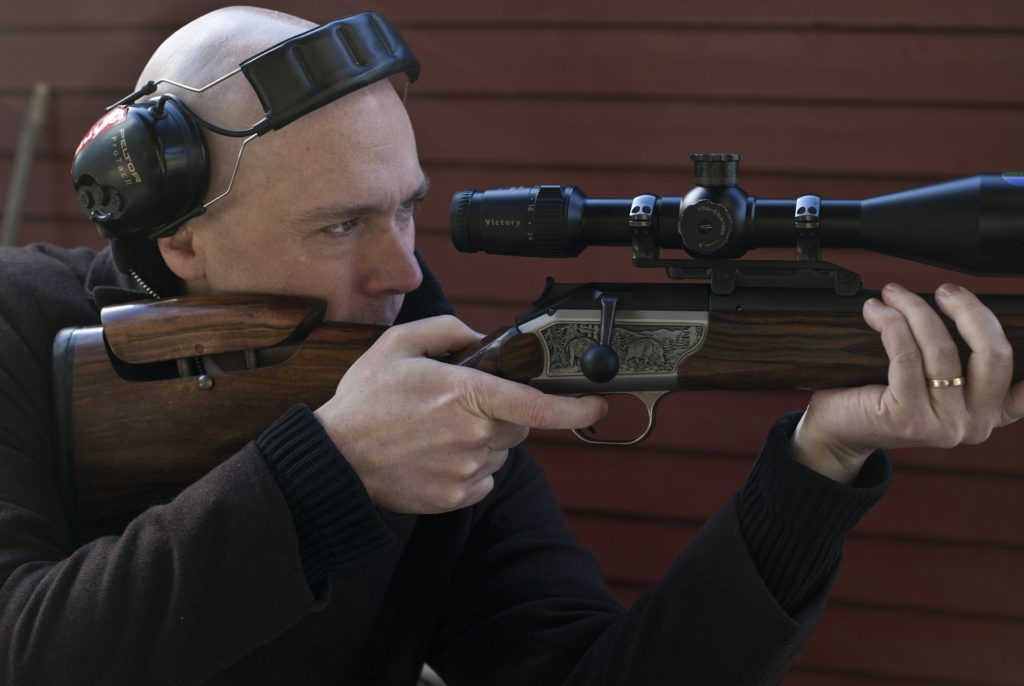Sports (Athletes)
Rifle Target Practice – Walking Mechanics (Psychology)(Pain)(Strain)(Injuries)(Posture)(Alexander Technique)
This ebook, An Alexander Technique Approach to Target Practice with a Rifle, is published in a PDF format. It is very detailed and practical, and it will give you the physical tools you need to take the limits off of your ability to shoot with ease, power, pain-free, and with accuracy without locking your neck and shoulders.
This ebook is also for sale on all AMAZON websites in a KINDLE format.
Located in Albuquerque, New Mexico, U.S.A. (MOVEMENT THERAPY)
Most of us think walking comes mainly from the front of the thighs, which we believe lift up the legs as we walk, but the initial movement in walking starts behind the leg. The calf lifts the heel off the ground, which places the foot on the ball of the big toe, bending all of the toes, as the leg bends easily at the knee and hip joints. In this moment with no intention of walking but of only experiencing weight on the ball of one foot and the other foot fully on the floor, you don’t have to shift sideways onto one leg for balance. Now, allow the leg on the ball of the foot to push off, and the lower leg will swing forwards. As you walk, the calve takes your heel off the ground, allowing the foot room to swing through.
The knee leads, which means it is the first part of the body that goes forwards after the head and neck releases upwards (Directs). So, you think head up and knees forwards, which keeps the body flowing up, as you initiate walking. Then you won’t push the head or chest or belly or pelvis or feet forwards first to initiate movement. Simply, you don’t initiate walking by pushing a body part forwards, which is misaligning the body, or by falling forwards and down, which is falling off balance into walking.
As I explained above, the calves are primary in walking but only on a level or almost level surface. When going up or down stairs or walking on a hill, you use the musculature of the thighs (quadriceps) to raise and lower the body with one legged squats in conjunction with the calves. So, as you walk up or down stairs, the quadriceps of each thigh raises or lowers the body. This is the musculature reality of the movement, but in doing this with Alexander Technique principles, you ask the head to lead you up or down the stairs without your body leaning forwards. You also ask your head to lead a lengthening spine upwards as your legs lower you going down the stairs. You go up to physically to go up and you go up to physically go down. This is directing.
The function of the abdominal muscles is to create additional support for the back, to support the internal organs, and to spiral the torso in walking. When you observe people in standing, you’ll notice how many people have bellies that are not doing this. Their abdominal walls are collapsed outwards, moving further and further from their backs, which also causes their backs to arch more and more. This usually becomes even greater when they walk. If you think the abdominals moving towards the back as you walk with the head leading a lengthening spine upwards, then the waist naturally engages and supports the back. Walking is an amazing activity to restore the function of the abdominals as a natural girdle supporting the back and organs.
I want to restate that you want to think the abdominals to the back, rather than the whole waist/spine narrowing to the center. Otherwise you are arching the back forwards out of alignment, even if you are asking the waist to help support it. In the Alexander Technique we say let your back be back, so it can support the torso without strain. One final point on the abdominals as you think of them moving towards the back, do not immobilize them. Engage them so they support the internal organs and spine. When you walk the torso is spiraled by the abdominals (obliques), and this means the abdominals are lengthening and shortening continuously as they assist you in walking, but without pulling the front of the torso downwards.
